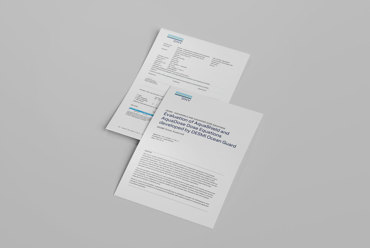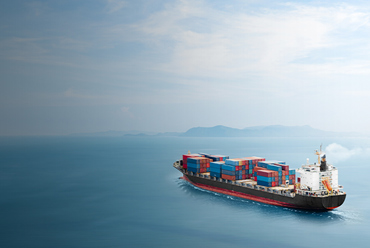
February 2024

July 2015
Pumping systems manufacturer DESMI offers advice to farmed-fish processing plants looking to invest in high-reliability, scalable pumps to meet production pressures.

With fewer and fewer fish in our seas, fish farming has grown to become an enormous industry worldwide – with billions of dollars in revenue and continued growth forecast for decades to come.
Like any industry of this size and growth rate, fish farming requires a reliable, high-throughput production apparatus to keep up with market demands. And, while they may not be the first thing most people associate with fish farming, the pumping systems used by today’s leading farms have become a business-critical factor in keeping costs down and production capacity up.

Scandinavian tradition
Scandinavia is no stranger to fish farming, either. In the Faroe Islands alone, the industry accounts for around 50 percent of BNP. This far-flung archipelago, with its unspoiled nature and waterfalls, has a long tradition of fishing, and has made the transition to fish farming in leaps and bounds.
DESMI is a frequent visitor to the Islands and very familiar with best practice farming methods and, in particular, with the role the company’s pumps play in keeping production up and running.
“Last week, we visited a major fish farming company in the Faroe Islands that’s building a huge facility for breeding and slaughtering salmon using the fjords, and another facility for producing feed,” DESMI tells. “Despite out many years in this industry, we are still impressed by the scale of things, and we are very interested in the difference that can be made by using today’s technologies to modernise fish farming and processing.”
Fish under pressure
In a typical, large-scale fish farm factory, daily loads of live salmon arrive by large ‘well boats’ before being pressed into the facility with the aid of giant pumps. For the Faroe Islands producer, DESMI is providing pumping systems to provide the new facility with seawater, helping these vessels to offload by creating a flow of water in large onboard tanks that is then released with the fish when a valve is opened to the plant.
“The job doesn’t stop there, of course,” DESMI continues. “With regulatory authorities careful of threats to the environment, well boats aren’t allowed to release water before it has been treated with UV or similar techniques to remove or incapacitate potentially invasive organisms.”
DESMI’s systems are also present in the processing plant itself, where large quantities of seawater need to be moved around as an indispensable part of production.
Advice for purchasers
For those investing in up-to-date pumping systems for their vessels and processing plants, DESMI has good advice to share.
“Typically, you’ll need huge pumping capacities – as much as 1,000 cubic metres per hour at quite low pressure. The machinery needs to be able to withstand the wearing effects of sea water, so we use bronze alloy, which is the same robust material as used for seawater cooling on commercial vessels. Our marine pumps are all equipped with heavy ball bearings, too, rather than the sleeves and other mechanical parts used in many other applications.”
DESMI goes on to explain that, while investments in such systems are significant, the costs of cutting corners can be far worse.
“Reliability is a must, because a low-quality pump can stop the process entirely, quickly resulting in tons of rotting fish and heavy daily losses. It’s a major business risk that simply has to be dealt with.”
With so much at stake, producers take other precautions, too, such as standby pumps that are always ready to take over if the worst should happen. In DESMI's opinion, however, the best line of defence is always to ensure the primary systems are as reliable as possible.
With fish products already a high-priced consumer item, DESMI advises producers to take advantage of low-energy systems, too – an area where DESMI has carved out a particular niche for itself and its customers. Low energy consumption is assisted by frequency converters that enable pumps to increase or decrease the power generated by their electrical motors depending on the current processing load.
The customer is king
High on DESMI's list of recommendations, too, is something that a quick glance through a manufacturer’s catalogue won’t usually reveal: flexibility.
“For the plant we’re talking about here, the vertical pumps that are usually used turned out to be too tall for the factory pump room, due to the customer having to lower the building’s ceiling for other reasons. The problem showed up quite late in the delivery schedule, but due to our decades of experience with pumps of all types – and a comparatively flat decision-making structure within DESMI, we were able to move from idea to final design in a remarkably short time. Everyone from design engineers to management got behind the project, keeping bureaucracy at bay and staying tightly focused on the customer’s needs and priorities.”
Flexibility has long been a key competitive advantage for DESMI, whose products are based on a philosophy that, while around 80 percent of a pump type may be standardised, there is still plenty of room to add specific features for a particular application or customer.
Reliable reputation
“We’ve been working with fish farming pumps for more than 10 years. But many people in the industry know us from other applications and ask to have our pumps for their fish farming facilities, too. So our reputation for good, reliable products, good service and ease of access to spare parts in the marine sector has carried over to this industry, too.”
DESMI is expecting strong growth for the future. In China, for example, the largest fish farming country in the world, efficient production of food is a key priority. And fish farming’s high efficiency and sustainability makes it a highly attractive focus area.
“We will be more active in Asia going forward,” says DESMI. “Asian fish farming is done differently, but all such plants require pumps to add new water to the plant or to circulate water to maintain a certain temperature, so there is plenty of room for us to grow. And, while a new plant may not be built every day, well vessels are constantly being launched from the world’s shipyards – and each one is potentially a good home for a DESMI pumping solution.”

February 2024

February 2024

August 2023

August 2023